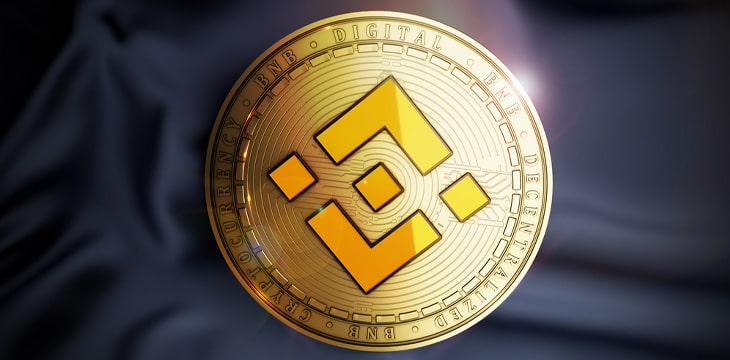Binance counts itself as one of the very few winners following the historic collapse of FTX. The overnight disappearance of one of the exchange’s largest competitors figures to further entrench the market dominance on Binance, which accounted for 55.1% of all digital asset spot trading even before FTX’s abrupt exit.
Yet despite being one of its primary causes, the brand has so far escaped from this dark chapter of digital asset history without attracting too much critical attention. From one perspective, this is fair: after all, it wasn’t Binance cooking FTX’s books.
However, it was Binance’s decision to publicly announce the liquidation of its entire holdings of FTT, FTX’s worthless token, which ensured that FTX’s implosion would be as spectacular as possible, with no hope of any rescue or comeback. Regardless of how Binance intended to go about the liquidation, its announcement caused the rest of the market to follow its lead, effectively causing a run on FTX and immediately forcing the issue of its insolvency.
No matter which way you slice it, FTX’s losses—and consequently the losses of its customers—have been undoubtedly Binance’s gain. What, then, should be made of the role that Binance and its CEO Changpeng Zhao played in the event that has devastated thousands of investors?
FTX’s loss is undeniably Binance’s gain
Putting aside for a moment the role that Changpeng Zhao played in the run on FTX, the annihilation of FTX has been perfect for Binance.
For one, it has ensured that FTX has occupied the front page of digital asset news for weeks on end and will continue to do so for some time. Binance couldn’t be happier at this: after all, we’re less than two months removed from the publication of a shocking investigation into the company by Reuters, one which revealed that under Changpeng Zhao’s leadership, the company was forging documents to evade legal obligations, had forced its compliance team out in pursuit of faster onboarding and had facilitated the evasion of U.S. sanctions against Iran.
More than that, however, is that the amount of competition among digital asset exchanges was vastly reduced almost overnight. Binance was already the biggest exchange by volume: with just a few keyboard strokes pushed to Zhao’s Twitter, he’d gotten rid of the fourth-biggest exchange and one of the few brands which rivaled his own in terms of name recognition.
With a result like that, it’s fair to question Binance’s motivation in announcing it would be liquidating the FTT on its balance sheet.
Changpeng Zhao sold the liquidation to Twitter as risk management: after an FTX balance sheet was leaked to CoinDesk, which showed that Sam Bankman-Fried’s empire was effectively insolvent, supported only by the holdings of its own valueless token FTT, the prudent thing to do was to liquidate their entire holdings of FTT, according to Zhao.
He also stressed that the move was not an attack on FTX—though, at the same time, he seemed to accuse Bankman-Fried of denigrating him and Binance in conversations with regulators.
But the reality is that if Zhao was as worried about the health and confidence of the industry as he claimed in internal staff emails, Binance could have taken any number of alternate paths to get out of its FTT bags. It could have slowly unwound its FTT holdings to avoid panic. If Zhao truly wanted to play savior to FTX and the wider industry, he could have quietly entered discussions for a parachute plan rather than publicly announcing that Binance would be saving FTX only to publicly rescind the deal hours later.
Zhao instead chose to push a domino that he knew would bring many of the industry’s largest players to its knees, leave the rest of it in a state of apnea as they waited to see if the contagion would reach them too, and most importantly would remove his biggest rival in Sam Bankman-Fried and the FTX empire.
The making of an illegal monopoly
It’s no surprise that Bankman-Fried doesn’t buy Zhao’s narrative: he referred to Zhao as his’ sparring partner’ and tweeted ‘you won’ after it became clear Binance did not intend to complete its acquisition of FTX.
Lawmakers don’t buy it, either. Last week, the U.K. Parliament’s Treasury Committee sought comment from digital asset companies at a hearing to examine the FTX collapse. Binance told the committee that the CoinDesk leak is to blame for the death of FTX as opposed to any action Binance had taken. Still, the committee’s chairwoman, Harriett Baldwin, seemed to see through it, remarking that “it must have been apparent when that decision was taken that was likely to cause the collapse of FTX, one of your major competitors.”
Similarly, U.S. Senator Cynthia Lummis released a statement in the early days of the crisis, saying she has “many questions regarding Binance acquiring FTX, including potential market manipulation, lending activity and whether customer funds and assets were appropriately safeguarded”.
I have many questions regarding Binance acquiring FTX, including potential market manipulation, lending activity, and whether customer funds and assets were appropriately safeguarded.https://t.co/gDqslPU91k
— Senator Cynthia Lummis (@SenLummis) November 8, 2022
Binance’s growing market share has likely been on the lawmaker’s radar for some time. One estimate made at the time the FTX acquisition was initially announced put Binance’s expected market share at over 80%—though the deal didn’t go through, the effect has largely been the same.
As Binance’s market share ticks up closer to 100%, it becomes more like a monopoly. That a company happens to enjoy an effective monopoly is not illegal in itself: merely cornering the market with a superior product is perfectly acceptable. But the route taken to build that monopoly and efforts expended to maintain it matters—and this is why Binance’s role in the FTX collapse is so important.
For example, under the U.S. Sherman Act, which forms the bulk of the U.S.’ antitrust legislation, a monopoly is unlawful if the monopoly power was wilfully acquired or maintained, as distinct from attaining it by having a superior product, business acumen, or accident of history.
Sherman Act violations attach severe penalties: corporations can be fined up to $100 million, while individuals can face up to $1 million in fines and up to 10 years in prison.
Should Binance become subject to an antitrust investigation at some point in the future, it’s hard to imagine the government taking a positive view on Binance intentionally torpedoing one of the few competitors it has left.
However, antitrust cases are notoriously difficult to prosecute because it requires an insight into the inner workings of a business which in most cases will have gone to great lengths to protect its secrecy. Unfortunately for Binance, responsibility for taking enforcement action under the Sherman Act rests with the Department of Justice, who already appear to be building a case against the exchange.
The FTX takedown is in the Binance playbook
Such market dominance is valuable far beyond the PnLs: that Binance was ever in a position to sink the fourth-largest exchange in the industry is a testament to the power such a dominant position allows.
This is no accident. Even before the FTX episode, Binance had made a concerted effort to snap up as much market share as possible. Zhao told a crowd gathered at the Web Summit 2022 in Lisbon that bear markets offer “a lot of opportunities” and give companies like Binance a chance to “purchase smaller competitors” thanks to dropping valuations.
In 2020, they bought CoinMarketCap, then one of the best-used information tools for digital assets. In 2021, they were in the running to buy the remaining assets of Voyager Digital before being outbid (by, coincidentally, FTX).
Binance’s appetite for power in the market even extends beyond the hard kind. The company took a $200m stake in Forbes in February, having briefly tried to sue the outlet for defamation after it ran the infamous story on Zhao’s jurisdiction-hopping ‘tai chi’ strategy. The suit never made it to court, probably because the Forbes story turned out to be entirely true, given that Reuter’s most recent expose confirmed the same allegations.
Binance was also one of the financial backers of Elon Musk’s Twitter bid, putting up $400m.
Its decision to help sink FTX was merely the latest in a string of moves aimed at consolidating power within the industry, taking Binance ever closer to becoming monopolistic power. Monopolies are disastrous for competition and, ultimately, for consumers, and this is true even when the beneficiary didn’t play a role in their creation. In the case of Binance, controlling 80% of all digital asset volume makes them the defacto gatekeeper for every digital asset. If Binance decides to delist a given coin, that coin loses access to the vast majority of its market. As such, much of the industry is at the mercy of Binance’s executive team.
Binance demonstrated this as recently as September, when it announced that it would no longer be supporting popular stablecoins USDC, TUSD, and USDP and would be forcibly converting any of its customer holdings in these assets to Binance’s own stablecoin, BUSD. This left just two stablecoins available on Binance: BUSD and Tether, the latter of which is relied upon by more or less the whole industry, Binance included.
Though Binance said the move was to ‘enhance liquidity and capital-efficiency for users,’ it seems self-evident that the move was a grab at the massively lucrative stablecoin market. Gary Gensler said at the end of 2021 that though stablecoins account for about 5% of all digital assets, the proportion of digital asset trading, which involved stablecoins, exceeded 75%. Given the primary utility of these stablecoins is their attachment to real-world dollars, there is precious little room for stablecoins to co-exist, making the competition between BUSD and other stablecoins a zero-sum game.
To illustrate the effect that Binance’s move had on its competitors, Circle, which is responsible for USDC, said in its recent S-4 filing that the conversion was part-responsible for $3 billion of the $8.3 billion decline in USDC circulation between June and the end of September 2022.
For Binance, anti-competitive behavior is the name of the game
In fact, Binance is already in trouble for exactly this kind of anti-competitive behavior. Earlier this year, a record-setting £9.9 billion ($11.97 billion) collective proceedings application (the U.K. equivalent of a class action lawsuit) was filed with the Competition Appeals Tribunal against Binance and three other exchanges (Bittylicious, Kraken, and Shapeshift). It accused Binance of colluding with the co-defendants in delisting BSV without reason (including forcibly converting BSV to other digital assets) which reduced or distorted competition in the United Kingdom.
On its face, it appears that the suit has at least Changpeng Zhao dead to rights. It’s evident from Zhao’s own tweeting around the time BSV was delisted that delisting had nothing to do with the quality of the asset or the legitimacy of its goals. In April 2019, Zhao tweeted, “Craig Wright is not Satoshi. Anymore of this shi#t, we delist!” Shortly after, he tweeted, “I also didn’t like the fact that the fork caused BTC to drop below $6k, which caused pain to many in the industry.”
I normally don't like get involved in debates, pick sides, etc. But this is going too far.
I also didn't like the fact that the fork caused BTC to drop below $6k, which caused pain to many in the industry.
— CZ 🔶 Binance (@cz_binance) April 12, 2019
Then, when Binance delisted BSV days later, he took to Twitter to urge other exchanges to follow suit—which they promptly did.
Though in its early stages, the suit has significant weight behind it. The class—an estimated 240,000 BSV investors—is being represented by Lord David Currie of Marylebone, who was the inaugural Chair of the Competition and Markets Authority, the U.K.’s competition regulator. In light of his years of experience as a competition regulator, Lord Currie said that “the fact that the delisting activity described… was concerted and has gone unchallenged by regulators raises, to my mind, serious consumer protection issues.”
Antitrust violations are the few remaining ways Binance can grow
Binance expanding into a monopoly by using its former rivals as fertilizer is dirty and underhanded, but a company like Binance only has so many ways to pursue its competition, having spent the last couple of years being chased in and out of different jurisdictions by the financial regulators and law enforcement departments of the world:
- They were banned from doing business in the U.K. in 2021 over inadequate consumer and money-laundering protections.
- It was warned by Japan’s financial regulator for operating in the country without permission.
- Thai authorities launched a criminal complaint against the exchange for operating in the country without a license.
- Malaysia’s financial regulator opened criminal proceedings against Binance for operating in the country without a license.
- In July, Dutch regulators hit Binance with a seven-figure fine, again for conducting business in the jurisdiction without registering with the Dutch national bank.
- In Singapore, Binance received a warning from the central bank and was banned from the country by the Monetary Authority of Singapore for violating local payment rules. Police in Singapore are apparently still investigating the exchange’s brief dealings in the country.
- In the U.S., the exchange is also said to be under investigation by the IRS, the Department of Justice, and the Commodity Futures Trading Commission (CFTC) for failing to implement legally required money laundering controls.
Despite this growing list of regulatory beefs, almost all public scrutiny remains fixed on FTX. This all suits Binance well in the short term, but eventually, one of the swords hanging over Binance will drop. The question is which one falls first: be it a record-breaking class action suit or the Department of Justice filing charges against Binance execs, Changpeng Zhao seems likely to join Bankman-Fried in the rogue’s gallery sooner or later.
Follow CoinGeek’s Crypto Crime Cartel series, which delves into the stream of groups—from BitMEX to Binance, Bitcoin.com, Blockstream, ShapeShift, Coinbase, Ripple,
Ethereum, FTX and Tether—who have co-opted the digital asset revolution and turned the industry into a minefield for naïve (and even experienced) players in the market.
New to blockchain? Check out CoinGeek’s Blockchain for Beginners section, the ultimate resource guide to learn more about blockchain technology.








